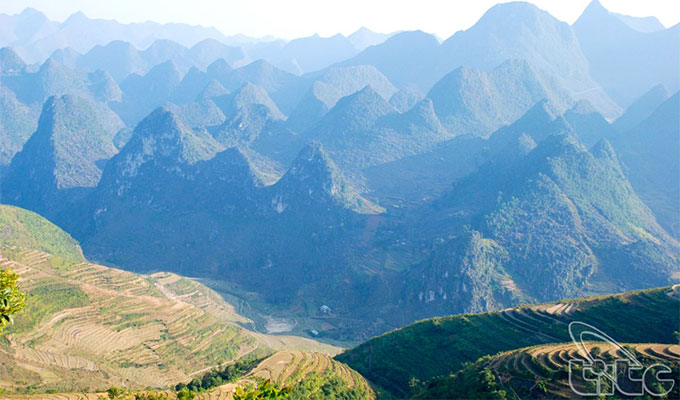The Prime Minister has recently given the green light to a tourism development master plan for Dong Van Karst Plateau national tourism site in the northern mountainous province of Ha Giang until 2025 with a vision towards 2030.

Dong Van Karst Plateau in the northern mountainous province of Ha Giang
Accordingly, the site is expected to welcome 800,000 visitors, including 130,000 foreigners, by 2020; 950,000 visitors with 250,000 foreigners, by 2025; 1.1 million visitors, including more than 380 foreigners, by 2030.
The master plan eyes tourism revenues of 1.3 trillion VND (57.3 million USD) by 2020 and the amount is targeted to increase to 2.8 trillion VND (123.4 million USD) by 2025 and 5 trillion VND (220 million USD) by 2030.
Key tourism markets will be Red River Delta provinces, mid-land and mountainous localities, and some cities and provinces in the central and southern regions like Da Nang, Can Tho and Ho Chi Minh City. Regarding international visitors, Ha Giang province should pay heed to developing markets with high spending, including Western Europe, North America, Japan, the Republic of Korea and ASEAN.
Geological tourism, community-based tourism, and nature tourism are seen as major tourism products, along with adventure travel and discovery tourism.
Five tourism zones will be set up under the plan: a cultural park in Xeo Sa Lung village, Pai Lung commune, Meo Vac district; Ma Pi Leng adventure travel zone at Tu San abyss; Thai An reservoir tourism site in Thai An commune, Quan Ba district; Quan Ba resort and healthcare site in Quyet Tien communes, Quan Ba district; and Nam Dam resort site in Quan Ba commune, Quan Ba district.
High-end accommodations and entertainment zones will be prioritised for development as well.
Dong Van plateau was recognised as a member of the Global Network of National Geoparks in 2010, becoming Viet Nam’s first geological park and the second in Southeast Asia.
Covering a total area of 2,356 km2, it is 80 percent limestone and contains the fossils of thousands of species of prehistoric creatures from 400-600 million years ago.
It is also home to over 250,000 people from 17 different ethnic groups, who boast unique cultures that have been fostered over the centuries.
Recently, 14 archaeological sites were excavated in Dong Van, Meo Vac, and Yen Minh districts, in Dong Van plateau, revealing hundreds of relics believed to appear in the prehistoric and protohistoric times.
The United Nations Educational, Scientific and Cultural Organisation (UNESCO) re-recognised the Dong Van Karst Plateau Geo-Park in the northernmost mountainous province of Ha Giang as a member of the Global Network of National Geoparks for the 2015-2018 period.